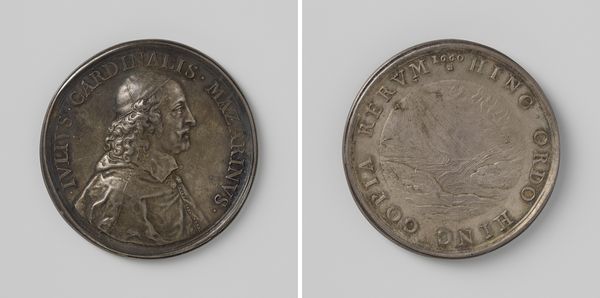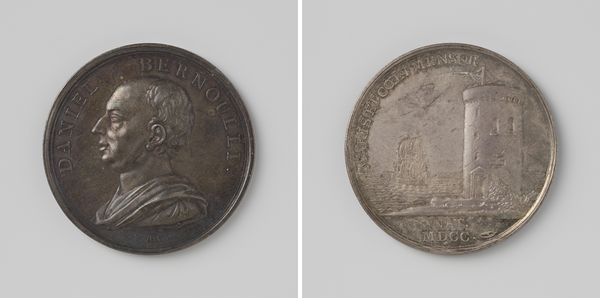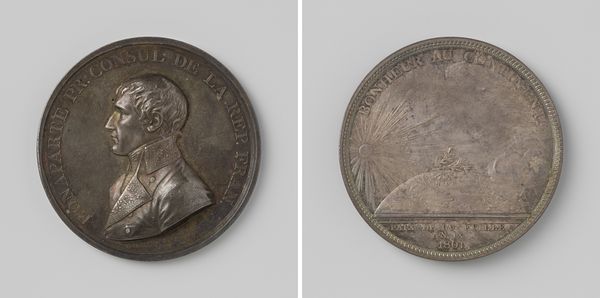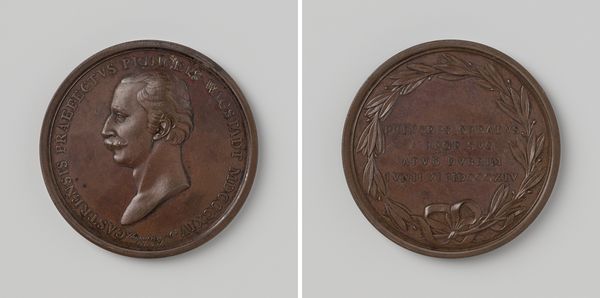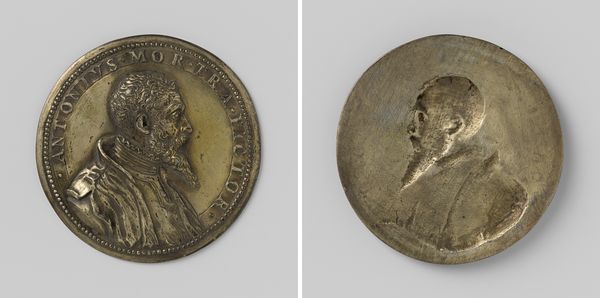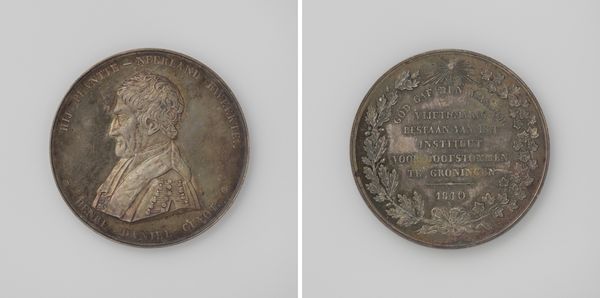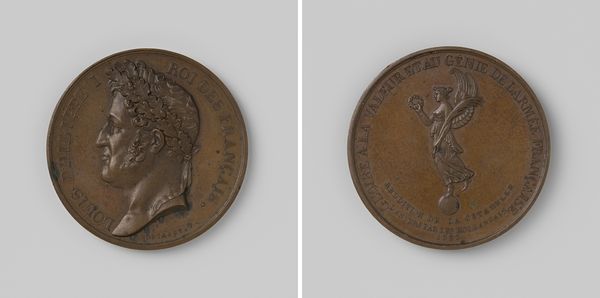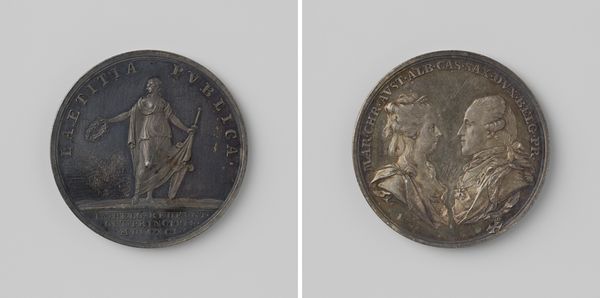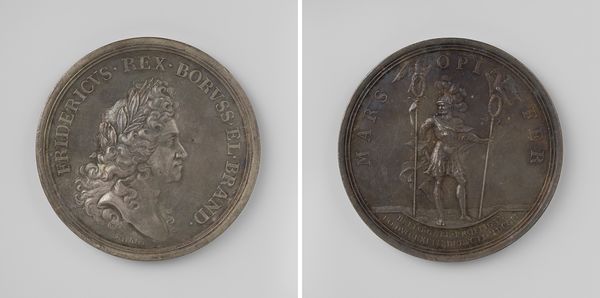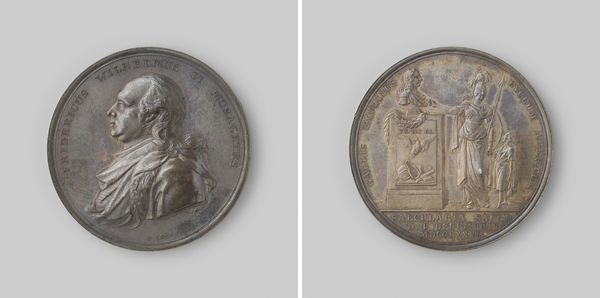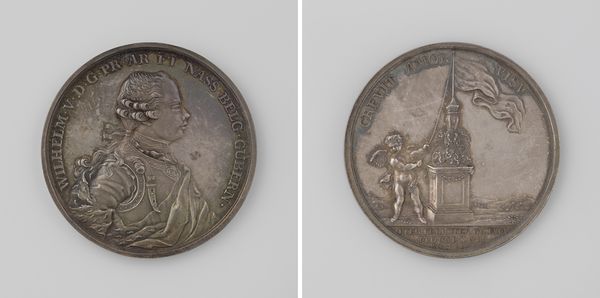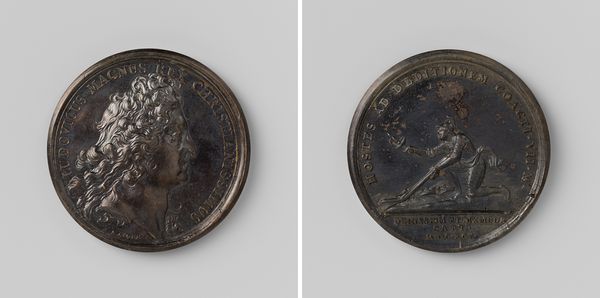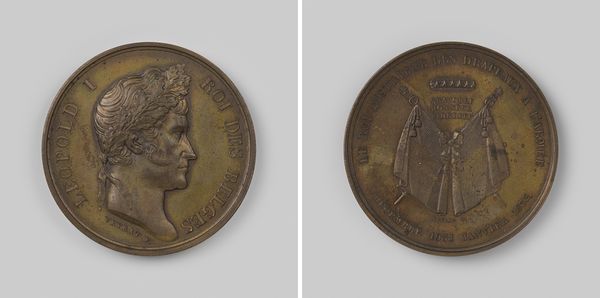
Religieuze tollerantie van Jozef II, Duits keizer en opheffing der kloosters Possibly 1782
0:00
0:00
metal, relief, sculpture
#
portrait
#
neoclacissism
#
metal
#
sculpture
#
relief
#
sculpture
#
ceramic
#
history-painting
#
academic-art
Dimensions: diameter 4.5 cm, weight 30.16 gr
Copyright: Rijks Museum: Open Domain
Editor: This piece is entitled "Religious Tolerance of Joseph II, Holy Roman Emperor and Suppression of the Monasteries," likely from 1782, and made by Johan George Holtzhey. It seems to be a metal relief sculpture, maybe for a coin or medallion? It has a somber yet celebratory feel. What can you tell me about it? Curator: This object commemorates a specific and contentious historical moment: Joseph II's reforms, particularly his Edict of Toleration and suppression of monasteries. Consider this piece not just as art, but as propaganda. It represents a calculated effort to shape public perception of these radical shifts. How do you think this object, specifically rendered in metal, helped to create such propaganda? Editor: Because of its reproducibility? The relief could easily have been stamped many times for wide circulation? And the material - metal - gives a sense of importance. Curator: Precisely. The medium itself communicates permanence and authority, lending gravitas to Joseph II’s actions. The piece engages with a political narrative and it highlights the way rulers attempt to craft their legacies through imagery and artistic production. Note also the neoclassical style, drawing parallels to ancient Rome to legitimize Joseph's rule and his 'enlightened' reforms. What do you notice about its reception today versus the eighteenth century? Editor: I hadn't thought about it like that, but of course, reception changes! Back then, the symbols would have been much clearer and maybe more persuasive. Today, we look at it more as a historical document, I suppose? Curator: Exactly. Today we can unpack layers of intention, understanding its initial function within the socio-political climate of the time, which gives this medallion new meanings in a modern context. Editor: That's fascinating. It’s a reminder that art always exists within, and actively shapes, its context. Thanks for that historical breakdown!
Comments
No comments
Be the first to comment and join the conversation on the ultimate creative platform.

